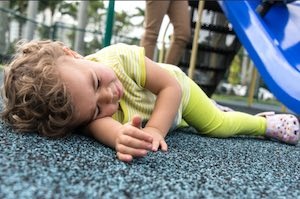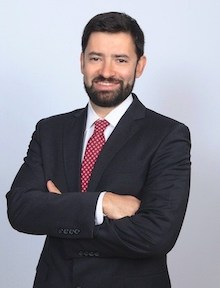Common Ways Children Are Injured in School Accidents and Who is Liable for Damages

The common ways children get injured in school accidents are through one of the following:
- playgrounds
- sports and physical education
- school buses
- bullying and assaults
- trips, falls, and slips
This normally leads to a variety of injuries:
- ankle, knee, head, wrist, and neck injuries
- internal injuries
- lacerations and contusions
- sprains and strains
- dislocated joints
- fractures or broken bones
Although some injuries, such as cuts and bruises, are minor, some are major accidents which require continuous medical attention.
In the worst cases, school accidents can lead to death.
Who is liable for the common ways children are injured in school accidents
When children are seriously injured in school accidents, the main question arises: who is liable? One or several parties can be liable, depending on the reason for the injury.
School
If the reason for injury is the school’s negligence of supervision of the child or maintenance of the school or playground equipment, then the school can be liable under torts and negligence.
If the reason for the injury was due to a manufacturing defect of playground equipment, the school can be liable under torts and negligence if it can be proven that the school knew about the defect and did nothing about it.
Manufacturer of equipment
The manufacturer under products liability law is strictly liable for design, manufacturing, and marketing defects, and the seller can also be liable for breach of warranty to the buyer of playground equipment.
Other children’s parents
If the reason for the child’s injury was bullying, the bully’s parents are liable. Convey v. City of Rye School District et. al. and Laura et. al., 271 A.D.2d 154 (2000). The school district, the city, and/or the board of education may also be liable if it can be proven that the school failed to provide adequate supervision. (Mirand v. City of New York et. al., 84 N.Y.2d 44 (1984).
School bus accidents
In school bus accidents, liability depends on the cause of the accident. If the bus driver was negligent, both the bus driver and bus company are liable. If the child was struck by another car after alighting from the bus stop, that car driver and the owner of the car are liable. It is rare for a school to be liable for injuries occurring at a point distant from the bus stop. Pratt v. Robinson, 39 NY 2d 554 (1976). However, in cases where the school superintendent already communicated to the county about the need to extend a sidewalk and install other safety measures to minimize the dangers of walking children leaving school premises and the county did nothing about it, both the school district and county can be held liable for accidents caused to the children resulting from dangers they already knew but did nothing about. Ernest v. Red Creek Central School District, et. al., 93 N.Y.2d 664 (1999).
City or County
In sports accidents, owners or operators of athletic facilities (who could be the city or county) are generally not liable because the participant assumes the inherent risks associated in playing the said sport. However, if the injury was proximately caused, not by the playing of said sport but, by the negligence of the owner or operator in maintaining the premises (i.e. such as a wet and slippery floor), these owners/operators can be held liable. Morgan v. State of New York, et. al, 90 N.Y.2d 471 (1997).
Requirements in Establishing Liability Under Torts and Negligence
Generally, a negligence claim arising from personal injury and/or wrongful death (including the common ways children are injured in school accidents) requires proof of the following: (a) an existence of a duty; (b) breach of a duty; (c) causation; and (d) damages. The causation, in this case, is the proximate cause or the event constituting a substantial cause that foreseeably produced the harm or injury to the child.
The existence of a duty is normally proven by a law requiring the observance of such duty. For accidents occurring in school premises, the school boards are under a duty to adequately supervise the students in their charge. Decker v. Dundee Central School District, 4 N.Y.2d 462 (1958). For accidents outside school premises, such as an injury to a child crossing a bus stop, there must be a duty on the part of the school district, imposed by the legislature, to transport the child to a location where she could walk without crossing any dangers. In the absence of any duty, there can be no liability. Pratt v. Robinson, supra.
Proximate Cause, Contributory Negligence, and Assumption of Risk
In assessing whether the school district, board of education, city, or county should be liable, the child’s injury should also have been proximately caused by the negligence of the school. Proximate cause is the event that is the substantial cause that foreseeably produced the harm or injury to plaintiff. Foreseeability is a primary factor in determining proximate cause. The injury to the child must be a natural and foreseeable consequence of the school’s negligence.
Under NY CPLR § 1411, if the child’s conduct or negligence contributed to the injury or the child assumed the risks related to the act that caused the injury, the amount of damages may be reduced. Because of this, schools normally raise the defense of assumption of risk in participants’ injuries in sporting events.
Because of the many issues and numerous defendants that can be liable in cases of children’s injuries in school accidents, it is best to consult immediately with a lawyer when your child has suffered a major injury in school premises. A lawyer can evaluate your case and ensure that you are compensated for injuries sustained by your child arising from the school’s negligence in the common ways children are injured in school accidents. Should you need assistance of counsel, we, at the Law Offices of Albert Goodwin, are here for you. We have offices in New York City, Brooklyn, NY and Queens, NY. You can call us at 212-233-1233 or send us an email at [email protected].
